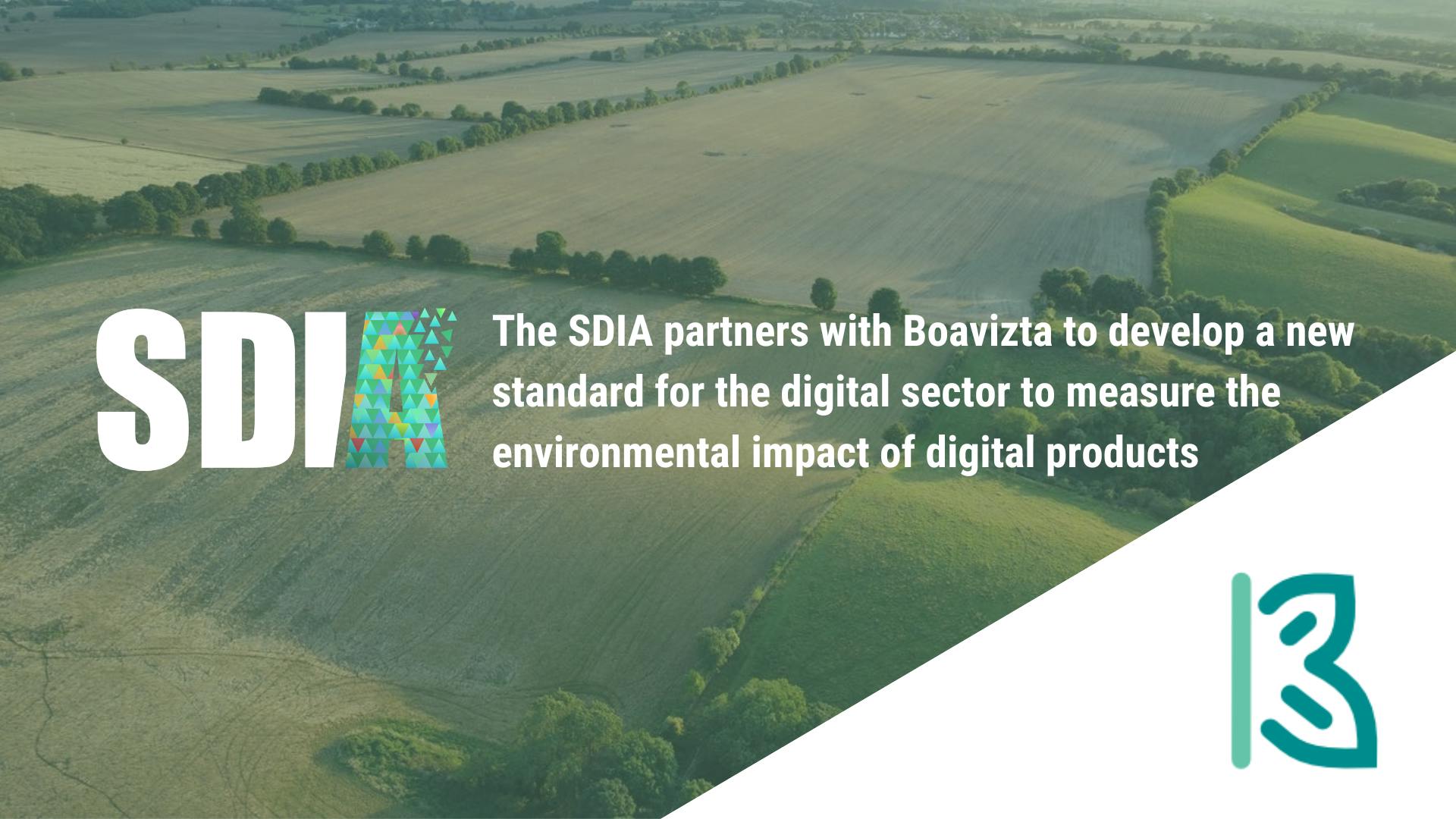The new standard will help organizations to take existing digital resource usage and translate it into a clear and measurable real-world environmental impact — enabling transparency, comparative benchmarking, and improvements.
Hamburg, Germany, 15 September 2022 – The Sustainable Digital Infrastructure Alliance (SDIA) announces a collaborative partnership with Boavizta for the development of an upcoming standard to measure the environmental impact of digital products.
Boavizta is an inter-organization working group dedicated to measuring the environmental impact of digital technology. The working group comprises a team of expert developers, consultants, and end-users committed to sustainable IT in France. The group strives to improve measurements in organizations, bringing actors of the measurement ecosystem together, and producing resources under free licenses.
Max Schulze, SDIA Founder, acknowledges this as a significant partnership that will benefit the entire digital sector: “In partnership with Boavizta, our new standard will set the bar high for measuring the true environmental impact of software applications and digital products, accounting for energy, CO2 emissions, raw materials, manufacturing, and operation, in an open standard that enables transparency.”
“Why is this standard important? Other industry bodies and people are working on similar issues, however, there’s a risk that industry-led efforts will merely focus on the energy aspects, which can mislead customers in believing that the environmental impact of a digital product is only about power consumption.” Schulze stressed. “With our initiative we are taking a societal perspective, setting the bar high to measure the total environmental impact providing developers, architects, and IT leaders with a meaningful indicator that they can use to reduce the impact of their products. Teaming up with Boavizta will give us the opportunity to achieve this goal and develop a standard which both the market and society benefit from.”
The SDIA has already developed an approach based on the Life Cycle Assessment (LCA) methodology which enables the conversion of digital resource usage (for example, a unit of memory, CPU time, storage, and network bandwidth) into environmental impact. In conjunction with an ecolabel, this methodology empowers developers, digital product and service providers, and software vendors to create transparency on their environmental impact for customers, businesses, and governments. This allows customers to make better informed, sustainable, purchasing decisions.
“Software applications and digital products rely on data centers, server hardware, as well as many mechanical and electrical components,” said Benoit Petit, Boavizta Co-Founder. “Unfortunately, the environmental impact is still unknown as there is a lack of transparency, particularly in the manufacturing phase of data center equipment and from vendors. To address these gaps, the Boavizta working group has defined formulas that estimate the environmental footprint of the manufacturing phase of servers - the most prevalent equipment in data centers. These formulas are the result of extensive research work with many iterations.”
Through previous work with Boavizta, which includes an API for retrieving environmental impact data for various server models, the SDIA and Boavizta have developed an Agent which expands the measurement of the static environmental impact to include the energy aspects as well as enabling the attribution of environmental impacts per virtual machine, pod, or process.
The progress is timely, as at the recent meeting of the European Union’s Transport, Telecommunications and Energy Council, there was a vote on the proposed directive 10490/22, which includes a call for the publication of the yearly energy performance and water footprint of data centers.
Paragraph 66 of the directive states: “To promote sustainable development in the ICT sector, particularly of data centres, Member States should collect and publish data, which is relevant for the energy performance, water footprint and demand-side flexibility of data centres... Data centre sustainability indicators should be established on the basis of that data collected, taking also into account already existing initiatives in the sector.”
The vote is an important first step toward more transparency in the sector, and for the “Fit for 55” package – the EU’s target of reducing net greenhouse gas emissions by at least 55% by 2030, a cause the SDIA has been advocating for a long time.
The development of this joint standard between SDIA and Boavizta will give organizations far greater scope to measure and manage real world operations. As digital infrastructure becomes ever more complex, with hybrid technology stacks across on-premise, edge deployments, and public cloud, a standard to measure the environmental impact of an application, regardless of where it resides, is invaluable.
By attributing the environmental impact and costs to an application, the entire organization behind the creation of a digital product can be engaged — users, business analysts, product managers, designers, all the way to the CEO — in rethinking and redefining the requirements to be considered in designing the application architecture. The development of a new standard provides benefits for individuals and organizations on their sustainability journey for environmental accountability and impact assessment, as well as setting their environmental credentials apart from competitors.
“Ultimately, every organization will have to invest in carbon accounting tools,” according to Annette Zimmermann, research vice president, Gartner. ��“Software solutions which provide transparent carbon measurement and actionable advice are seeing rapid adoption, and Gartner expects continued growth as integration capabilities progress.”
Setting the bar high is the first step towards creating a standard that leads to transparency, and a significant reduction in the environmental impact resulting from the digital sector. As a nonprofit organization, the SDIA is inviting all willing participants to support this initiative.
SDIA
Founded in 2019 and co-based in Germany and the Netherlands, the SDIA is a nonprofit network of more than 100 members and partners working to catalyze the transition toward a sustainable digital economy. The Alliance also brings together stakeholders from across industries and fields, both public and private, in an effort to realize its Roadmap toward a Sustainable Digital Infrastructure by 2030.
Boavizta
Founded in 2019 and based in France, Boavizta is an inter-organizational working group dedicated to evaluate the environmental impact of digital across organizations.
The Boavizta working group produces expert and up-to-date resources under free licenses.

.jpg?ixlib=gatsbyFP&auto=compress%2Cformat&fit=max&rect=0%2C44%2C600%2C800&w=600&h=800)